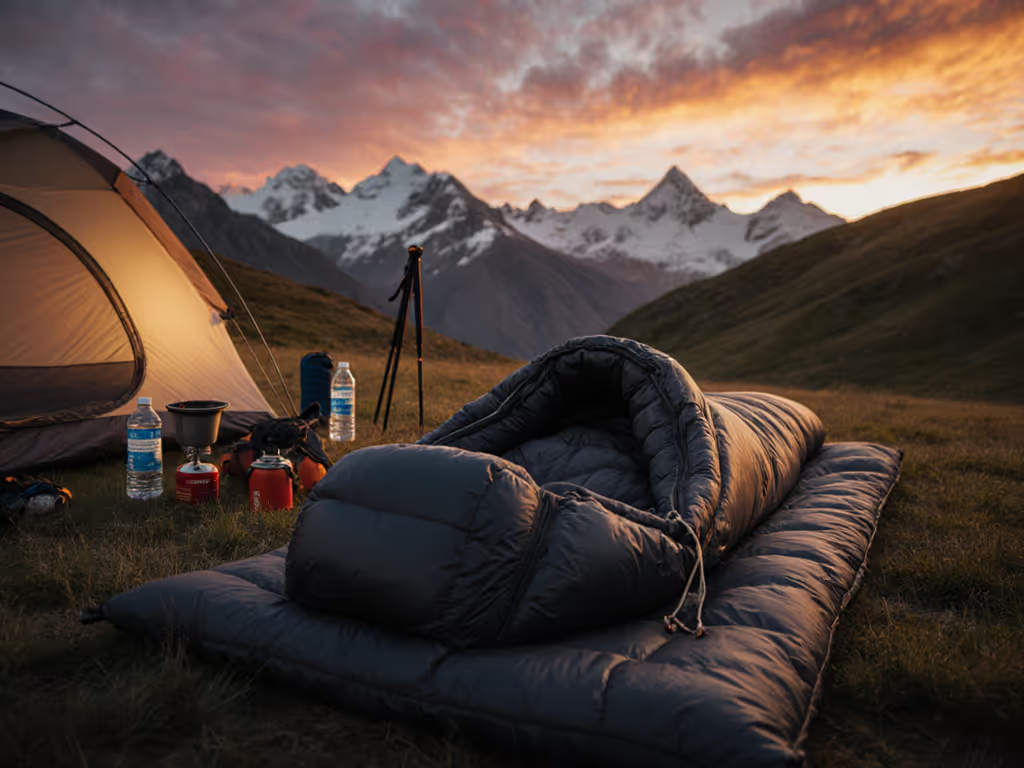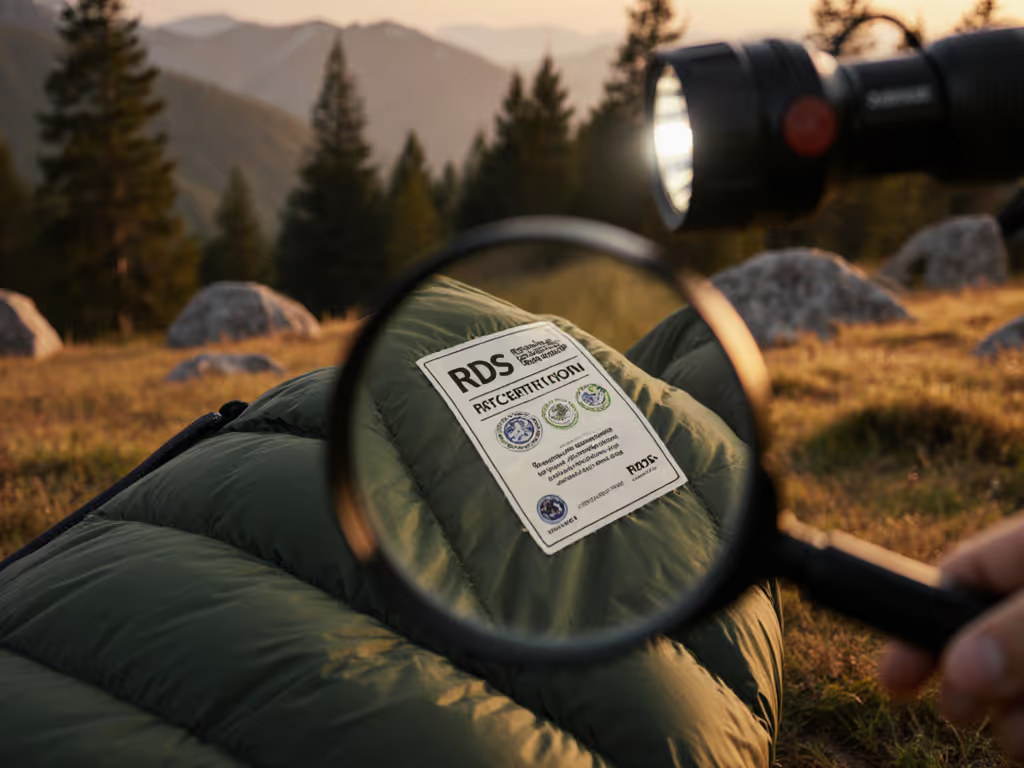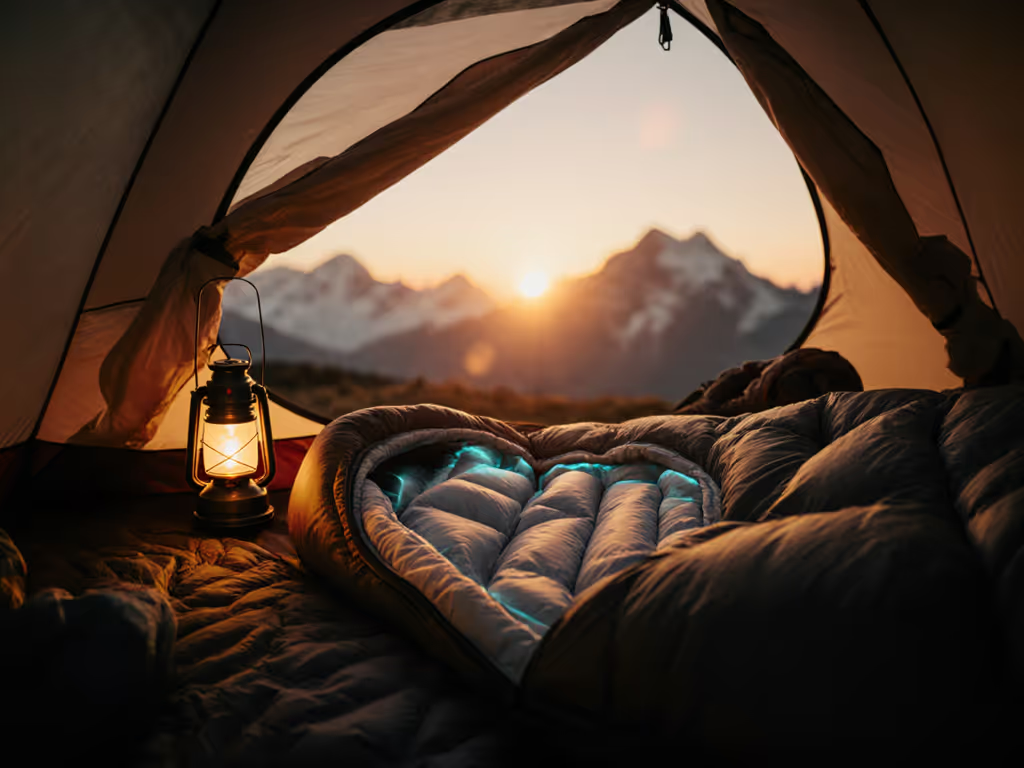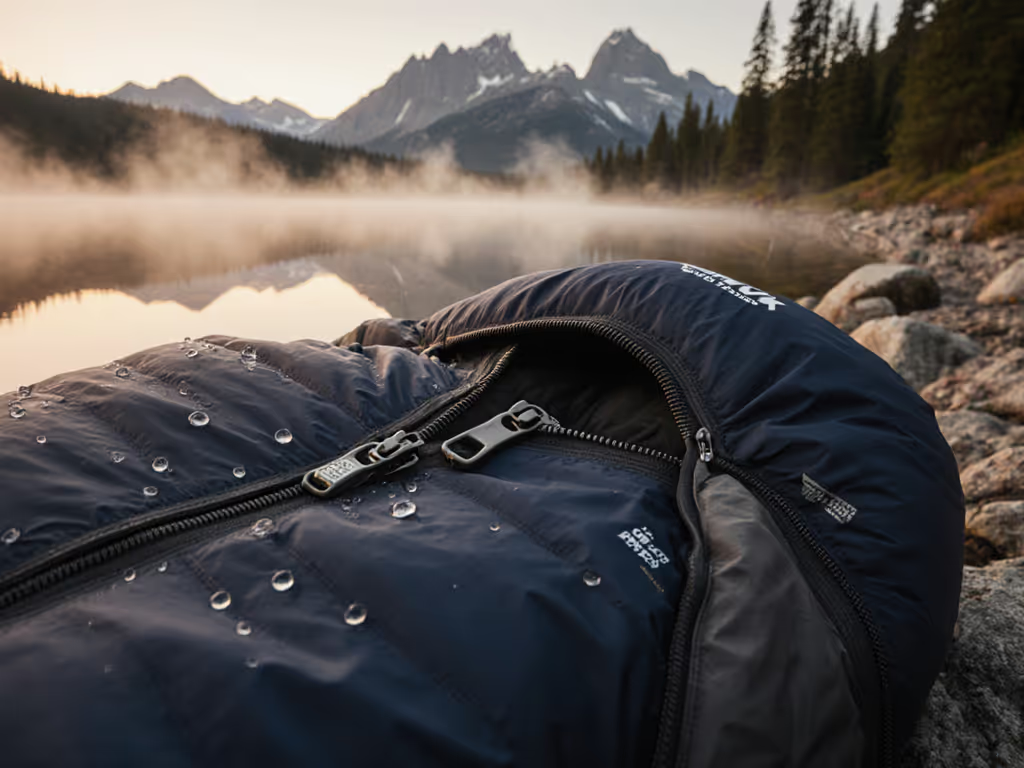
Sleeping Bag Size Guide: Avoid Cold Spots & Wasted Warmth
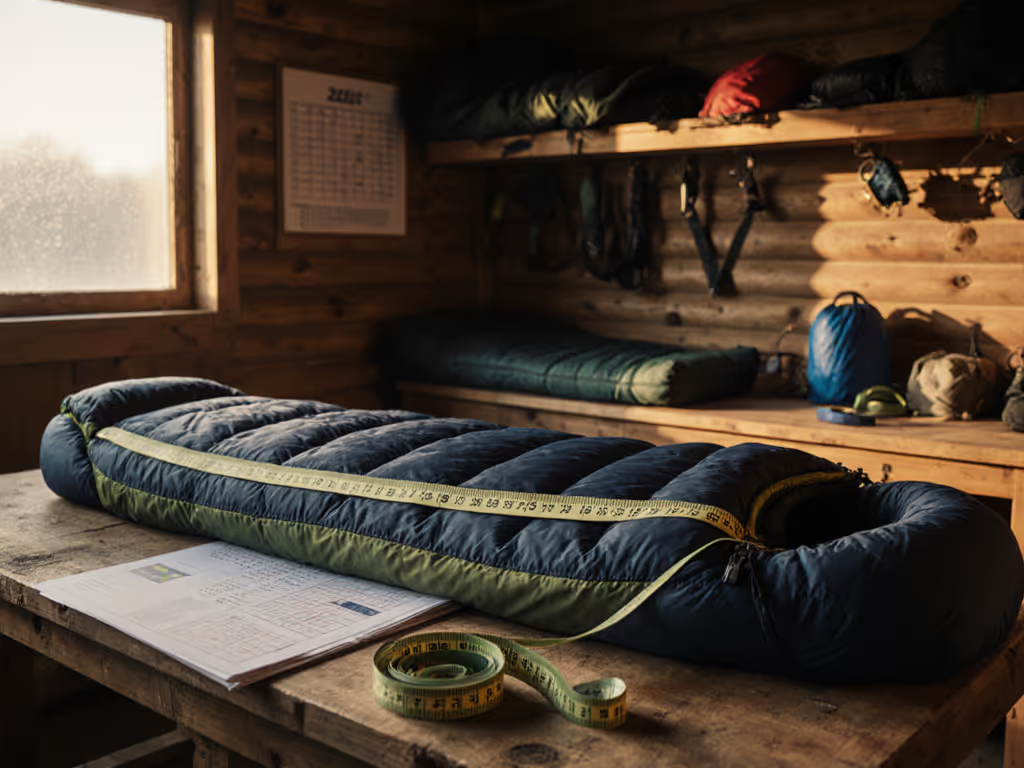
Figuring out how to size a sleeping bag correctly separates those who wake up shivering from those who sleep like logs in the woods. Forget chasing the lowest price, because your bag's length and fit directly determine how much body heat you retain or waste. A precise sleeping bag length guide that accounts for your actual sleeping posture (not just standing height) transforms "budget gear" into reliable sleep. I learned this the hard way after choosing a "bargain" bag that couldn't trap heat on a desert night; my mistake was ignoring the critical relationship between size, fit, and warmth retention.
Understanding the Warmth Drain of Poor Sizing
Most campers fixate on temperature ratings yet overlook the single biggest factor in real-world warmth: how much air space exists between you and the bag wall. Every extra inch of width or length requires your body to heat more air, a huge energy drain when you're calorie-depleted. Consider this physics-based reality:
- A properly fitted bag reduces internal volume by 25-40% compared to oversized alternatives
- Mummy bags maintain warmth best by minimizing dead air space (confirmed by independent ISO testing labs)
- Rectangular bags sacrifice 15-20°F of effective warmth due to excess space
Red risk flag: Oversized bags create convection currents that pull heat toward zippers and footboxes, especially dangerous in sub-40°F conditions. Green risk flag: A snug but not restrictive fit ensures insulation compresses evenly around your body, maximizing warmth-to-weight efficiency.
The Critical Measurement Protocol (Beyond Height)
Measuring yourself for a sleeping bag requires more nuance than standing against a wall. When horizontal, your spine decompresses and feet naturally fall forward, adding 4-8 inches to your effective length. Here's my field-tested measurement sequence:
- Lie flat on your back with knees straight
- Have a partner measure from the crown of your head to the heel (not the sole)
- Add 2 inches for wiggle room (but never more, this is where warmth gets stolen)
- Note shoulder width at widest point if you're broad-shouldered or sleep on your side
A sleeping bag's "regular" size typically accommodates 5'10"-6'2", but check the manufacturer's actual interior dimensions, not just the "size" label. Many brands' "regulars" are cut for narrower body types that leave cold spots for side sleepers.
Most gear companies categorize by height ranges:
- Small: Fits 5'6" and under (interior length ~72")
- Regular: Fits 5'10"-6'2" (interior length ~78")
- Long: Fits 6'2"-6'6" (interior length ~84")
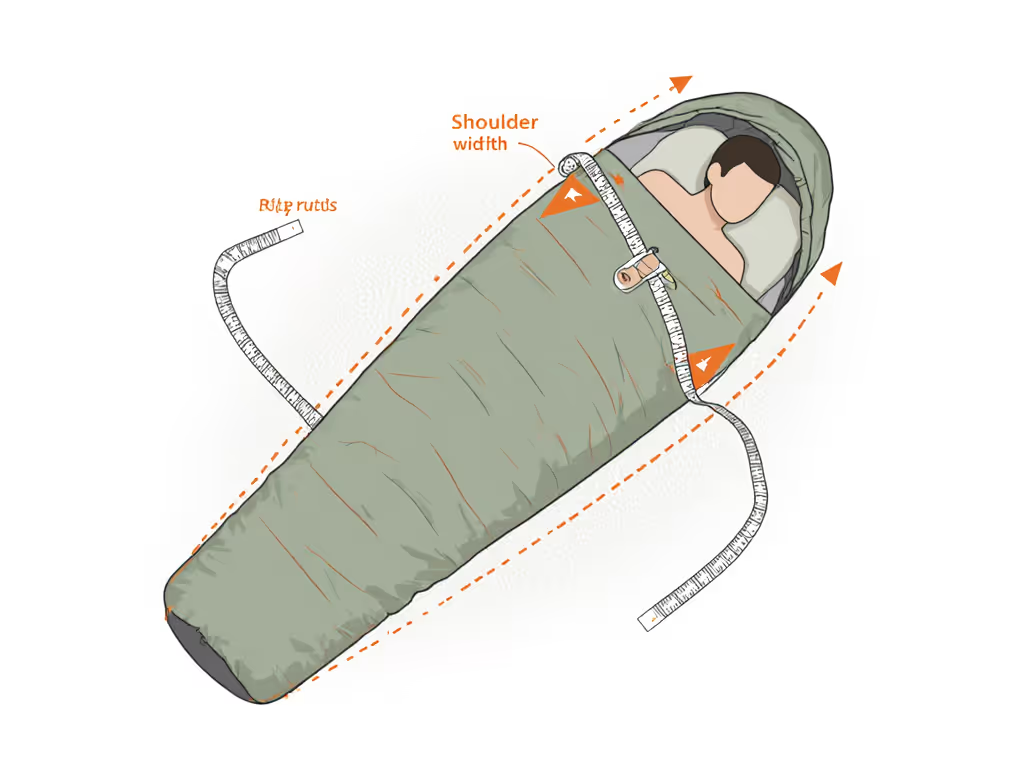
Shape Matters: Warmth vs. Comfort Tradeoffs
Your sleeping position and body type dictate which shape conserves warmth without compromising sleep quality. For a deeper breakdown of options, see our sleeping bag shapes comparison.
Mummy Bags: Maximum Warmth Efficiency
Ideal for backpackers and cold sleepers, these taper from shoulders to feet with a snug neck baffle. The tradeoff? Restricted movement. Best for: temperatures below 45°F, side sleepers under 160 lbs who use a properly sized pad.
Semi-Rectangular: The Sweet Spot for Most
Offers moderate tapering for warmth without extreme restriction. Best for: 45-65°F camping, side sleepers over 160 lbs, car campers prioritizing comfort. Provides 5-8°F more warmth than rectangular bags while allowing position changes.
Rectangular: Warmth-Wasting Comfort
These feel like a blanket but require significant body heat to warm excess air space. Only consider for summer car camping above 65°F, never for backpacking where ounces equal effort.
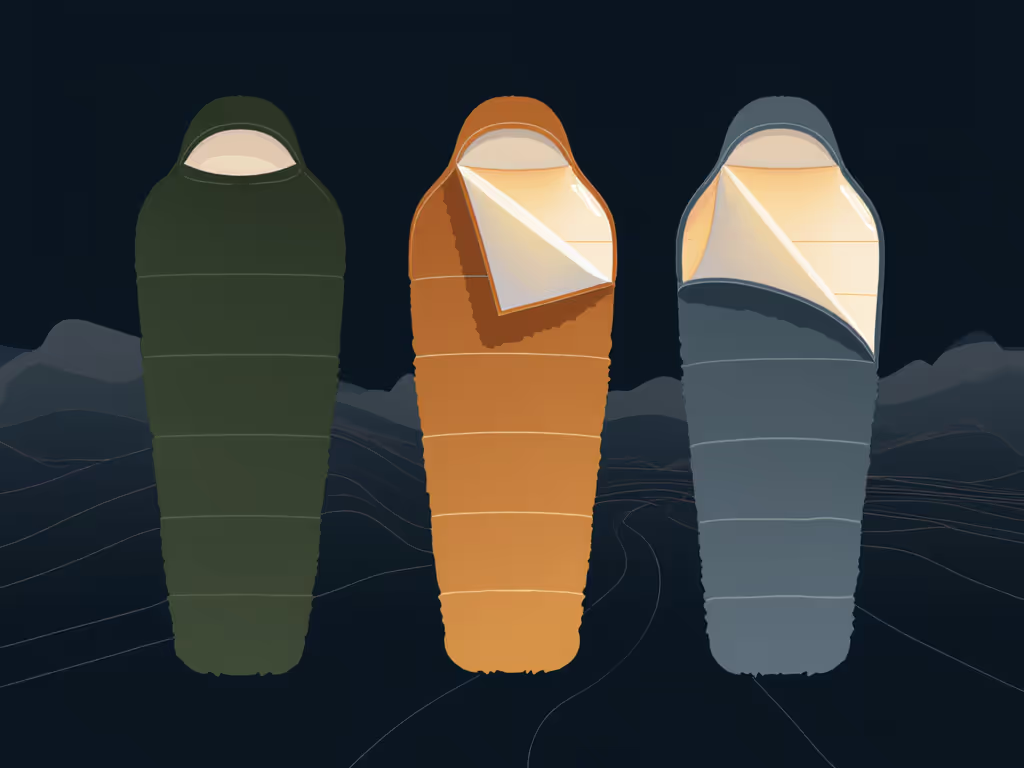
Pad Compatibility: The Hidden Sizing Factor
No sleeping bag performs well on an undersized pad. Your pad must fully support your body's contact points; otherwise, insulation compresses where you press down, creating dangerous cold spots. I once chased a cheap "compact sleeping bag" only to discover it was 4 inches wider than my pad, leaving my hips exposed to the ground. The solution:
- Pad width should match your hip width (measure while lying down)
- Pad length must cover from shoulders to heels (add 3" for pillow space)
- Regular sleeping bags typically pair with 20" wide pads; wider bodies need 25"+
This is where "cost-per-night math" matters. Spending $30 more on a properly sized pad beats replacing a $200 bag that fails due to poor compatibility. Your sleeping system is only as warm as its weakest link.
Cost-Per-Night Analysis: Sizing for Long-Term Value
Discounted "best sleeping bags" tempt us with low prices, but improper sizing leads to premature replacement, a false economy. Run this calculation before buying:
Cost-per-night = Total purchase price ÷ (expected nights/year × seasons of use)
A $250 bag used 30 nights/year for 5 years costs $1.67/night. The same bag failing after 2 seasons due to cold spots (requiring a $300 replacement) jumps to $3.21/night, wasting $230 on avoidable mistakes.
Repair-first insight: Most sizing issues stem from compressing insulation at pressure points. Learn basic field repairs like repositioning baffles or adding a draft tube. Many quality bags offer warranty repairs for fit-related insulation shifts, far cheaper than replacement.
Actionable Fit Checklist
Before purchasing any sleeping bag, complete this sizing checklist:
- Measured your horizontal height (not standing height)
- Confirmed interior dimensions (not just "size" label) match your measurements
- Verified shoulder width accommodates side sleeping
- Checked pad compatibility (width/length alignment)
- Tested neck baffle adjustment for draft prevention
- Verified zipper path avoids hip compression
Invest Where Failure Costs Most
That desert night taught me price-to-warmth matters, but failure costs the most outdoors. Proper sizing isn't about "the perfect bag", it is about eliminating avoidable warmth leaks that turn cheap gear unreliable. Whether you're eyeing a featherlight ultralight option or a roomy car-camping solution, spend where failure hurts; save where it doesn't matter. Your warmth retention depends more on precision fit than premium materials, so measure twice, buy once, and sleep soundly.

